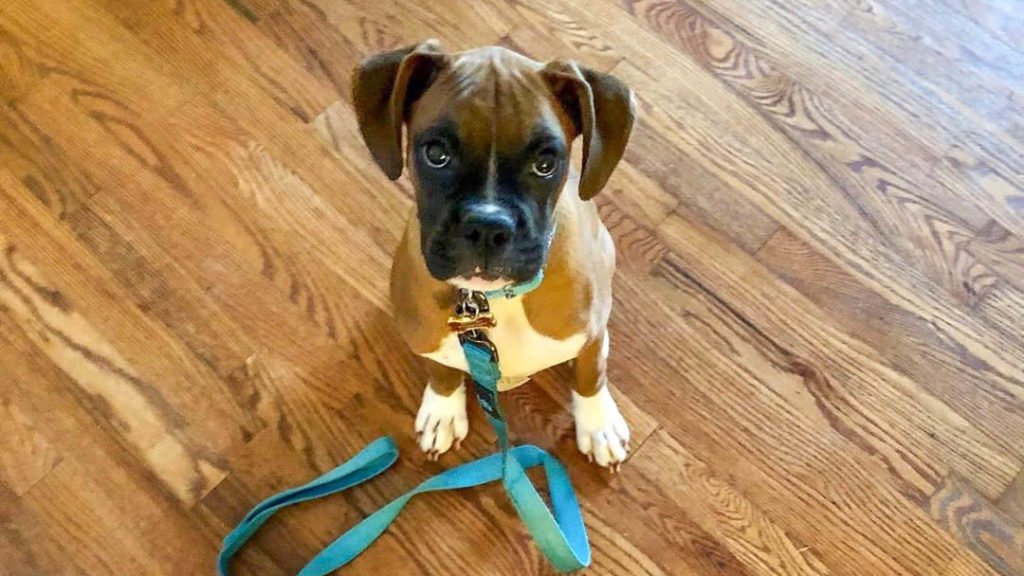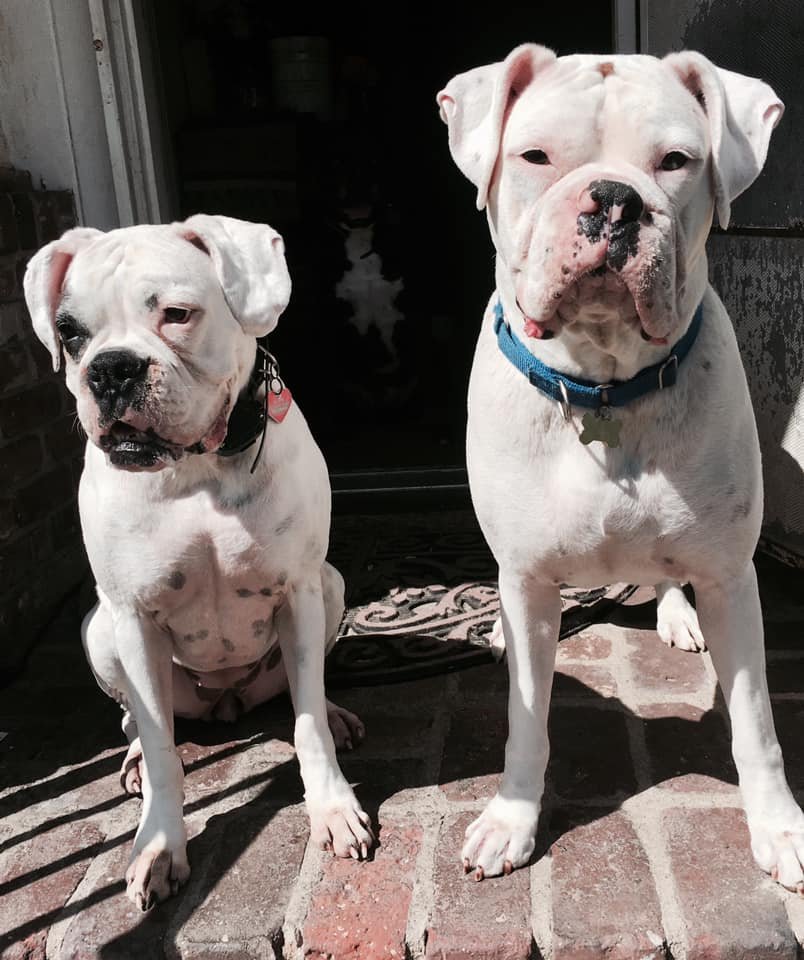
The Boxer
Our newsletter, links, post, blog and anything that will help with your Boxer.
The Boxer … where to start?
There are so many aspects to this beautiful breed, it’s difficult to know where to begin. We are in the process of continuing to add to this page, so keep checking back to read our quarterly newsletter, blog posts and any new resources.
If you are unfamiliar with this breed or just looking for information, we are here to help. Please use the search bar below to look for specific topics. We hope that this helps you better understand the breed that is “Boxer” and all the funny, quirky things they do.
The Boxer breed
Bright, fun-loving and active are the keywords to describe this breed. The Boxer is a medium size dog with a square strong built. Male and Female boxers differ in sizes somewhat. Boxer standard states males are 23‐25 inches tall and weighs 65‐80 Lbs. Female are 21‐23 ½ inches tall and weighs 50‐65 Lbs. Many rescue Boxers are smaller in size, but some are much larger. Boxers are energetic but some can be ok in small living quarters with proper exercise. Life expectancy is about 8-14 years. Here are 8 facts you may not know about the Boxer Breed.
History
Boxers were bred in Germany in the late 1800’s. First boxer club was formed in Munich in 1895. Boxers ancestors are thought to be “Brabant Bullenbeisser”, a mastiff type dog that are now extinct. Boxers were bread to assist human in hunting – for holding down prays. They wanted strong, energetic dogs with shorter nose. Shorter nose was for breathing while holding down the pray for a long time. The wrinkles on his muzzle were for the purpose of keeping the prey’s blood away from the eyes. Boxer breed became popular in United states around 1930’s. The American boxers differ somewhat from the European boxers in that they are generally more slender and sleek compared to the European counterpart that are bread to have stockier appearance.
The Truth About White Boxers
Gracie and Blue Bunny.
White Boxers are not rare – 20 to 25% of Boxers are born white.
White Boxers are not all or mostly deaf – Approximately 5-8% are deaf in both ears and up to 13% can be deaf in one ear.
White Boxers do not suddenly go deaf – if they are able to hear by 4-6 weeks the chances of them going deaf is the same as any other dogs.
White Boxers are not albinos
White Boxers are as smart as fawn or brindle counterparts.Some of the White Boxers do sunburn more easily, just like some Caucasian humans will sunburn more easily – you can use sunscreen to prevent it.
White Boxers are no more prone to blindness than any other Boxers.
White Boxers are no more prone to illness than any other Boxers.
White Boxers are no more aggressive than any other Boxers.
There is no evidence whatsoever that white Boxers are more prone to cancer.
White boxers are beautiful! White Boxers are NOT albinos. They all have some spots of pigmentation somewhere on the body. White boxers are not rare. Approximately 20 ‐ 25% of the boxers are white due to flashy to flashy boxer breeding. Because white is not a part of the breed standard, breeders used to euthanize perfectly healthy white puppies. The practice is changing and white boxers are placed in homes on a spay/neuter basis more and more.
As you can see in the old photographs of Boxers in Germany, white coloring is in the genetic pool. It is said that the white became a disqualification due to Boxers being used as war dogs.
White boxers are prone to sunburn. A certain amount of deafness is associated with white boxers. This is caused by lack of pigment cell in the inner ear. The genetic basis of deafness in white boxer is the same as in the Dalmatian. The prevalence of deafness in both ears is approximately 5-8%. Up to about 13% can be deaf in one ear. Deafness in one ear generally goes unnoticed by people. Deaf dogs are generally able to lead a perfectly happy life with human and dog companions.
Please download and use our WCBR New Adopter Handbook to assist. you with training and behavioral issues.
Do you have a new puppy? Check out our puppy raising handbook to help you through all things puppy.
Training
Obedience and training classes are a great way to get to know your dog, how they are around other dogs, people and the skills they have already acquired. There are many different approaches to training; WCBR prefers a positive training approach where the dog is rewarded for the behavior desired.
Recommended Trainers
Dog Sense Dog Training and Woof Academy Day Camp and Group Training, Pamela Chandler, Owner & Trainer 559 Union Street, Encinitas, CA 92024 (760)525-6293
Dream Dogs - Canine Behavior Training, Lori Carman 40725 Yucca Lane Bermuda Dunes , CA 92203 (760)904-0150
Goldstar K9 Academy, Kara Rindfleisch Coast Mesa, CA (949)510-6772
Redefined Dog Training, Located in Topeka, Kansas. Serving Topeka, Lawrence, Manhattan and the surrounding areas.
Victoria Stilwell list of trainers, positive training methods - find one in your area.
Exercise & Diet
The Forever Dog, Rodney Habib and Veterinarian Karen Shaw Becker
Two of the world’s most popular and trusted pet care advocates reveal new science to teach us how to delay aging and provide a long, happy, healthy life for our canine companions.
Resources
Deaf Dogs Rock - Deaf Dogs Rock, Inc is a non-profit corporation formed in 2012 in the state of Virginia. The mission of Deaf Dogs Rock is to promote the care and well being of deaf dogs. This charitable and educational purpose is done through the education of the public regarding the adoption, care, and training of deaf dogs, and through financial support of the shelter, medical, and transportation needs of deaf dogs. Additionally, Deaf Dogs Rock is a national resource for information serving perspective and current deaf dog owners, and the shelters and rescues that have deaf dogs available for adoption.
The Complete Healthy Dog Handbook: The Definitive Guide to Keeping Your Pet Happy, Healthy & Active by WÖLF - The indispensable medical reference for every dog-owning household. Written by a veterinarian with a gift for presenting complex information in a lively, accessible way, this book covers everything from choosing the right puppy (or adopting the perfect adult) to caring for the senior dog. It thoroughly discusses more than 100 canine illnesses, and includes the most up-to-date information on pet food safety, "designer" dog breeds, homemade diets, vaccine protocols, obesity and heart disease, pet insurance, and more.
Whole Dog Journal - A great resource for all things dog. Seriously, there is so much content on their website, it would take this whole page to explain the resources listed.
Veterinarians
Leave No Paws Behind Veterinarian Clinic, 1047 E Amar Rd., West Covina, CA 91792 (626)667-7575
Ridgeline Veterinary Clinic, Dr. Rachel Reedy - 68100 Ramon Road, Suite A3, Cathedral City, CA 92234 (760) 507-1500

The Gate Escape(Threshold Training For Your Dog)
Keep your dog safe from running out of a threshold. McCann Dog training breaks this down into simple steps to give you results for stopping this behavior.

